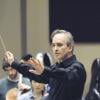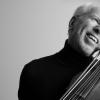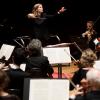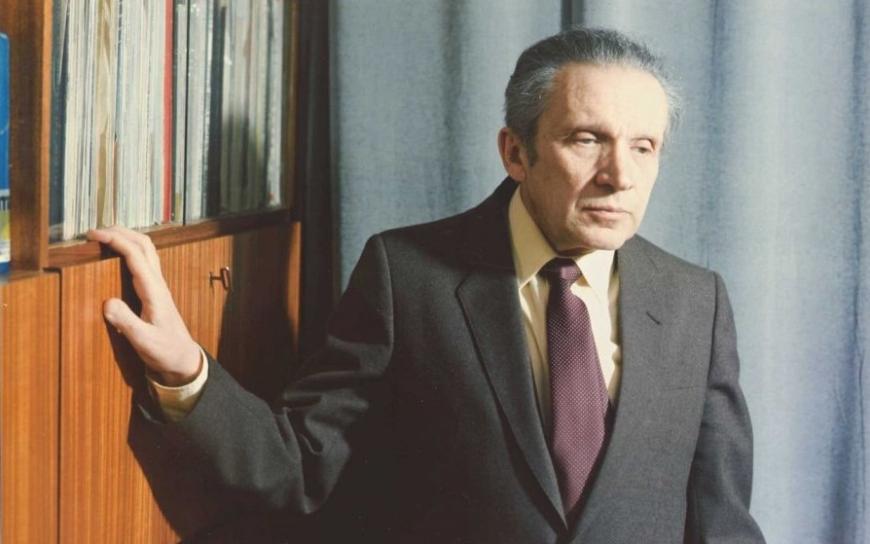
The classical repertoire is undergoing a sea change, perhaps more rapidly now than ever. Some of this is due to the current explosion of interest in Black and female composers past and present. There is also the plethora of new operas and the emergence of a generation or two of prominent, well-connected young composers who grew up absorbing more influences than any previous generation. With all of that going on, it’s sometimes easy to overlook another vast reassessment of the repertoire that began some 40 years ago and is still uncovering new material — music by composers whose lives were disrupted by the Nazis or the Soviets.
The search has gone on under the aegis of several programs — Entartete Musik, Recovered Voices, and Music in Exile among them — and a number of composers have achieved a solid foothold on recordings, if somewhat less so in concert halls. Decca’s Entartete Musik series in the 1990s put a lot of this music into view, as did James Conlon’s extensive survey of the works of Alexander von Zemlinsky for EMI. Composers like Viktor Ullmann, Franz Schreker, Franz Schmidt, and Walter Braunfels, while not exactly household names yet, are at least visible now, their music available for those who want to judge for themselves whether these were unjustly neglected works of genius or justly left by the roadside of history. Or something in between.
There we have the conundrum: While trying to redeem the memory of these figures who suffered so much, have we unlocked any real masterpieces that can stand beside those that have been long accepted into the repertory? Should this music displace the current occupants of the limited performance time that all organizations have at their disposal? Is it time to give Beethoven and Mahler a long rest so that we can perform Zemlinsky and Schreker? I know what the box office folks would think of that.
For now, recordings are still the most welcoming medium for exploring this repertoire — especially in this streaming age, where space, whether on the schedules of performing arts groups or on the shelves of the shrinking number of record shops, is not an issue. With that, let’s go on to a trio of new releases of music from three more composers who are being revived.
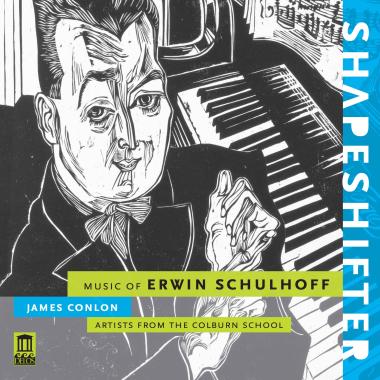
Of the Recovered Voices composers who were persecuted, exiled, or in some cases murdered by the Nazis, Erwin Schulhoff (1894–1942) was, for me, the most interesting, the most wide-ranging, and often the most fun. Born to a German-speaking Jewish family in Prague, Schulhoff was caught between the poles of this mixed identity. His influences zigzagged between his late-Romantic classical training, post-World War I Dadaism, imported American jazz, folk music, and eventually socialist realism; he even set The Communist Manifesto to music in an oratorio. Thus inclined toward leftist politics, he obtained Soviet citizenship but couldn’t make it out of Prague in time to avoid arrest by the Nazi occupiers. Ultimately, he died of tuberculosis in a detention camp in Bavaria.
Schulhoff has been very much in the sights of the Ziering-Conlon Initiative for Recovered Voices, the latest outcome of which is a CD entitled Shapeshifter (Delos), a modern term that fits Schulhoff’s ever-shifting musical personality. A combination of orchestral, chamber, and solo piano works, the recording is staffed solely by students and graduates from the Colburn School, with Conlon lending some prestige to the project by energetically leading the RVC (Recovered Voices at Colburn) Ensemble in the Concerto for Piano and Small Orchestra. There are no socialist polemics here, nor Dada trickery.
The concerto covers a lot of ground in its 21 uninterrupted minutes, starting with a bass drone, choppy piano chords, mystical Slavic-sounding winds, and a lush orchestral interlude right out of the cinema that collapses in a fit of falling scales. A carnival with sparely applied percussion breaks out in a finale that is marked Allegro alla jazz (although only one or two measures of anything really resemble jazz), eventually dwindling down to a gentle violin-piano duet before the band comes roaring back. Dominic Cheli is the skilled pianist here, as well as in all but one of the remaining works on the disc.
Five Pieces for String Quartet contains a satirical Stravinsky-flavored waltz, a serenata that becomes an anti-serenata, and an “Alla czeca” movement that pokes fun at Schulhoff’s Czech homeland but turns serious in the “Alla tango” and “Alla tarantella” sections. There is a Suite for Piano Left Hand that isn’t terribly eventful, save for a rhythm-less Improvisazione and a heavy-footed dance to close. (It was written for the Czech pianist Otakar Hollmann, whose right hand was rendered useless by a bullet in World War I.)
The Violin Sonata No. 2 has a rhapsodic, somewhat acerbic, and agitated opening movement, followed by a somewhat morose Andante. The Burlesca goes by like the wind before petering out, and the finale is a stormy thing that also moves quickly. Finally, “Susi” serves as a sweet little solo piano encore that leans toward ragtime, looking dreamily and longingly across the pond toward the birthplace of jazz as the situation in Europe circa 1937 darkened.
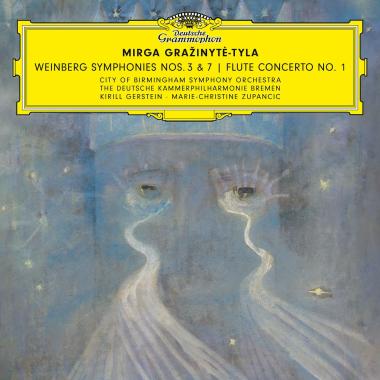
The resurrection of Mieczysław Weinberg (1919–1996) has gathered major steam in just the last decade with the fierce advocacy of Gidon Kremer and now Mirga Gražinytė-Tyla, who is recording some of Weinberg’s 22 symphonies. A native of Poland, Weinberg managed to evade the Holocaust by heading East to the Soviet Union, living in Minsk (now in Belarus), then Tashkent (now in Uzbekistan), and finally Moscow, where he ran into new problems under the heel of Stalin after the war. He was even arrested on the unfounded suspicion of participating in the so-called “doctors’ plot.” Though he was rehabilitated after Stalin’s death, Weinberg never achieved much visibility outside the Soviet Union during his lifetime.
By now, almost all of the Weinberg symphonies have been recorded on various labels. Although I can’t say that I’ve sampled them all, so far the Symphony No. 3 — which Gražinytė-Tyla has recorded with her City of Birmingham Symphony Orchestra (Deutsche Grammophon) — is the best one of the lot that I’ve heard, along with the partly-choral Sixth. The modal opening of the Third’s first movement sounds like a long-lost British symphony — maybe that’s why the CBSO takes to it so wholeheartedly and emotionally — but troubled clouds eventually take over, and it ends quietly. The scherzo is based on a Polish folk song, and the slow movement develops a lyrical sweep that again sounds English. Shostakovich, particularly his Eighth and Ninth Symphonies, figures in the finale; he and Weinberg were good friends and often traded material.
Elsewhere on this disc, in the Flute Concerto No. 1, the Shostakovich influence becomes overpowering; the galloping flute in the opening movement and the brooding slow movement that leads mysteriously without pause into a waltz finale are right out of Dmitri Dmitriyevich’s paint box. This piece might be a good name-that-composer trick question at a listening party.
Shostakovich turns up again and again in the Symphony No. 7 for strings and harpsichord, with Gražinytė-Tyla now turning to the Deutsche Kammerphilharmonie Bremen and pianist Kirill Gerstein in the surprising role of harpsichordist. He is thrown right into the fray at the beginning with a pensive harpsichord solo; hearing this, you can imagine Weinberg and Alfred Schnittke crossed paths at some point. The scherzo seems directly patterned after Shostakovich, coming in the shadow of his String Quartet No. 8 from four years earlier; Weinberg must have heard it. Then comes a bleak, quiet Andante and an anguished Adagio. A follow-up to the brusque rapping-on-the-door motif from the Eighth Quartet leads off the finale in the form of a short, rapid harpsichord trill. It sounds like either a telephone or a doorbell ringing — Stalin and the NKVD calling? The strings pick up the trill after a while and go at it abrasively before everything dies down to morose strings and harpsichord. Yes, Weinberg was another shapeshifter among the exiles.
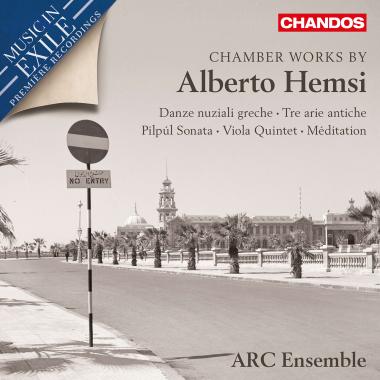
The third composer up for revival here is Alberto Hemsi (1898–1975), who until just a few years ago was completely off nearly everyone’s radar. Part of the reason is because Hemsi’s background was uniquely out in left field. Born in Turkey of Sephardic ancestry, Hemsi had to pick up and go several times in his life to places on three continents, whether for educational, professional, or political purposes. He was educated in Milan and took up researching Sephardic music throughout the diaspora, which resulted in a cycle of 60 songs gathered under the title Coplas Sefardies.
Hemsi was wounded in World War I while serving as a soldier in the Italian Army, fled the Greco-Turkish War to the island of Rhodes, and eventually settled in Alexandria, from where he was evacuated to Cairo during World War II. The aftermath of the Suez Crisis of 1956 forced him out of Egypt to Paris where, broke, he rebuilt his career as an academic and music director of two synagogues.
No recordings of Hemsi’s music turn up in catalogs at all until after 2004, when his widow belatedly donated his entire archive to the European Institute of Jewish Music in Paris — and even then, only a trickle of recordings have emerged since. However, a new release from Chandos’s Music in Exile series — which looks to be a modestly proportioned successor to Decca’s long-defunct Entartete Musik project — introduces us to a cross section of Hemsi chamber works. The music is performed expertly by members of the ARC (Artists of The Royal Conservatory) Ensemble of Canada, for which Conlon happens to be honorary chairman, though he doesn’t conduct here. All are first recordings.
Despite its title, Danze nuziali greche (Greek nuptial dances) for cello and piano reveals Hemsi’s strong Sephardic streak right away, with humorous titles for the movements honoring the mother-in-law, the bride, and the godfather. Tre arie antiche for string quartet is drawn from the Coplas songs, with an opening movement that often swings to a fandango rhythm, a Canzone that swoons nostalgically, and a playful Rondo finale that changes tempo a lot.
The Pilpul Sonata for violin and piano is full of Sephardic touches, but at its center, it is basically a neo-romantic concoction locked into the 19th and early 20th centuries, as is the Meditation for cello and piano. A Viola Quintet muddies the overall picture some more, with a catchy Burlesca that bounces like a jig and a Greek/Balkan dance in 7/8 time.
Hemsi’s place in music history should be close to that of Ernest Bloch, who, though coming from a very different place one generation earlier, was putting together a parallel blend of Jewish music in Romantic-era sleeves. Any of the pieces on this CD could be credibly slotted into chamber music programs as a break from the usual Brahms or Dvořák routines.
After hearing these releases, a number of traits that these three Jewish composers from different backgrounds had in common fall into focus. All had to — or tried to — leave their homelands, all were the sum totals of mosaics of influences and places, and all were not particularly tied down to one school or another. Their music could not be labeled and in any case didn’t conform to the postwar serial mainstream. There you may have the main reasons why their work was ignored for decades, even after their tormentors were long gone.
Now, ironically, the main obstacle for dissemination of the music of exiles is that there are no gatekeepers anymore. There’s so much music clamoring for attention in cyberspace that one can become paralyzed trying to choose. Things easily fall in the cracks. Thankfully, with these recordings, these once-neglected composers from the troubled middle of the 20th century have the chance to be heard through the tumult.


